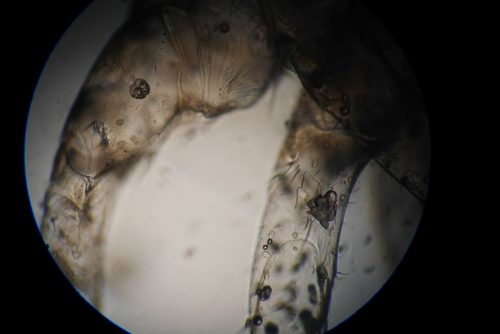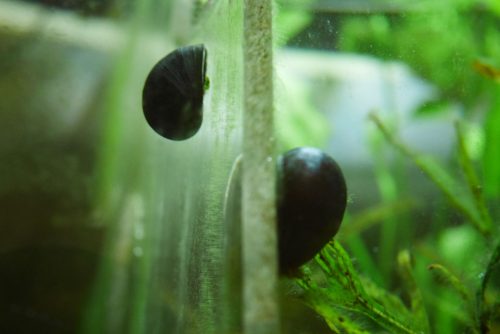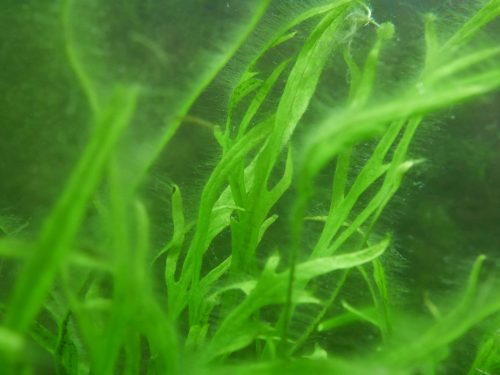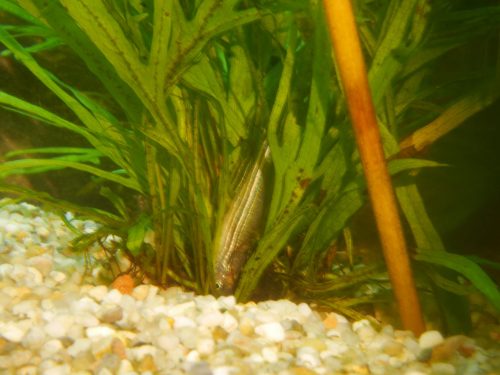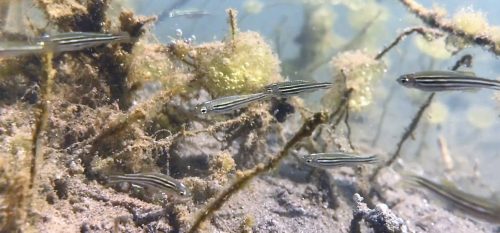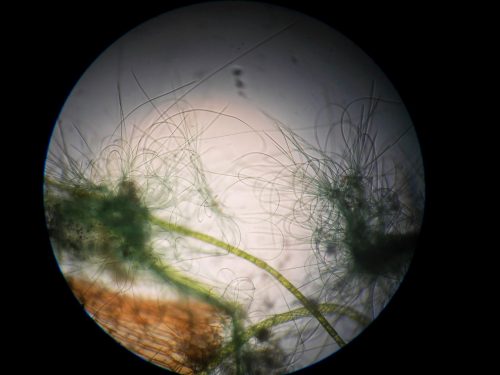Vienna_31.10.2020 In addition to the fact that brine shrimp [Artemia] are a widely used food item for small or larval fish and crustaceans (see brine shrimp), Artemia provides a unique example of how to develop a strategy in dealing with critical conditions needed for survival. The Artemia model depicts adaptation as a complex response to … Continue reading
Category: umwelt
under the microscope
Vienna_17.10.20_04:19 pm [dead shrimp under the microscope x 100] The shrimp did not survive. On October 13th I found one still alive, on October 17th I discovered a dead one, I put it under the microscope.
biota
Vienna_16.10.20 [Dusky Nerite / Neritina pulligera???] At 7.10.20 I went to the pet shop to have a chat. I came back with three snails [one red-rimmed melania (Melanoides tuberculata) and two Dusky Nerits (Neritina pulligera), four little Yamato shrimps (Caridina multidentata), a plant called spade-leaf sword (Echinodorus cordifolius), and a spherical alga called Marimo moss … Continue reading
not a person
Film stills and text snippets from the subtitling of FAR OFF SOUNDS: Fish & Synths
companions
Vienna 15.09.20_04:01pm In the pet shop zebrafish are kept in community with other fish species. One could als say that they coexist. I watched them for while to see if they interact with each other and asked the shop owner if they do. They don’t. It seems like they don’t exist for each other. Siamese … Continue reading
sessile filamentous algae
Vienna_14.07.20_12:47 pm There is algae growth again, but it’s a different species. I can’t identify it. They adhere to the plants, particularly to the Java fern and the glass surfaces. Unlike the cyanobacteria, you cannot wipe them off the surface. They stick firmly on it, especially on the plant tissue.
hidden in the Java fern
11.07.20_11:42 am I couldn’t see 2point this morning. I searched with a bamboo stick between the plants and scanned the entire aquarium. No 2point. A miracle and a bad feeling, I don’t want to have a corpse in the tank. Found him around noon, dead, hidden in the Java fern [Microsorum pteropus ‘Trident’].
laboratory environment
Number of laboratories in the top 25 productive countries (according to their number of publications). Illustration produced from the data of Kinth et al., Mapping of zebrafish research: a global outlook, 2013 Zebrafish based research is performed at estimated >3250 institutes that spread numerous countries of the world, but there is a focus on Europe, … Continue reading
natural environment
film still from: Wild zebrafish in India Jutfelt Lab: Wild zebrafish filmed in their natural habitat in northern West Bengal in India. The natural range of the zebrafish is centred around the Ganges and Brahmaputra river basins in north-eastern India, Bangladesh and Nepal.They have typically been described as inhabiting slow-moving or standing water bodies, the … Continue reading
anatomy & diagnosis
[1] gills [2] swim bladder [3] Weberian ossicles [4] ears [5] heart [6] brain [7] liver [8] stomach and intestine [9] kidney [10] spleen [11] gall bladder img from:https://www.anglingtimes.co.uk/advice/science/articles/inside-a-fish I read about fish diseases and found something called “Fish Hole In The Head Disease”or hexamitosis, respectively hexamitiasis. Hexamitiasis is a parasitic disease that can affect … Continue reading
unpredictable interactions
view through the microscope of detritus on the ground of the fish tank (100 x) In scientific fish facilities living beings other than the model organism are usually not welcome (unless they are part of an experiment or part of the bacterial population in the filter system). They could trigger unpredictable interactions that make it … Continue reading
personal preferences
The observed preferences are not stable and only valid for a period of a few days. ▲ 1point prefarably loiters in the separated ‘food chamber’ mainly close to the bottom. He has this habit since about one week. ▲ For a couple of days bent also had a preference for the right side of the … Continue reading

